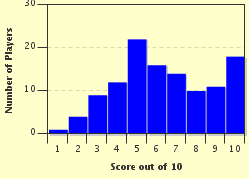Quiz Answer Key and Fun Facts
1. Which of these ancient ruins was believed to have been used to track eclipses among other things?
2. Which one of the following scales is used for measuring lunar eclipses?
3. Name one of the two planets in our solar system that do not experience eclipses.
4. Before being discovered by Europeans how did the Tahitians interpret eclipses?
5. In February 29th, 1504 which intrepid explorer saved his crew from starvation by predicting an eclipse?
6. Which jewelry related term is used to describe one of the features of a total solar eclipse?
7. How did the Inuit and Tlingit of Arctic America interpret eclipses?
8. A total solar eclipse that occurred on May 29, 1919 was used to prove which of the following scientific theories?
9. There was an eclipse overhead at the moment American author Mark Twain was born and when he died.
10. For centuries, people from which country thought an eclipse was a sign that a dragon was eating the Sun?
Source: Author
dcpddc478
This quiz was reviewed by FunTrivia editor
Nannanut before going online.
Any errors found in FunTrivia content are routinely corrected through our feedback system.


